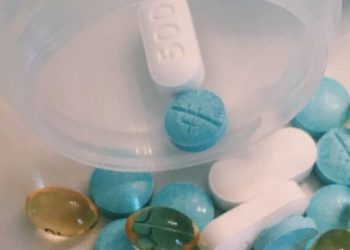Automated pupillometry may be helpful in opioid agonist therapy dosing for opioid use disorder
1. In this study, automated pupillometry demonstrated a significant change in mean pupil size detected within 15 minutes of opiate agonist therapy dosing amongst patients treated for opioid use disorder.
2. This study also found that there may be a threshold change in pupil size that may indicate good withdrawal symptom control.
Evidence Rating Level: 3 (Average)
Many patients with opioid use disorder (OUD) find it difficult to manage due to withdrawal symptoms; thus, the dosage of opioid agonist therapy (OAT) needed to control withdrawal symptoms is an important question. Current protocols use the validated Clinical Opiate Withdrawal Scale (COWS), which includes a measurement of pupil size that has low precision and high interobserver variability. More precise measures of pupil size and reactivity could help eliminate this high interobserver variability. As such, this pilot study examined whether automated pupillometry may be more accurate in helping quantify opioid withdrawal amongst patients receiving OAT
This pilot study included patients aged 18-50 with OUD who were admitted to Boston Medical Center, Boston, Massachusetts, United States of America and received recommendations on OAT from the inpatient Addiction Consult Service between March and December 2018. Urine toxicology screening was performed to confirm opioid use. Participants were included if they consented to the pupillometry measurements, which were performed with the NeurOptics NPi-200 (n=27). Measured variables included pupil sizes (in light and dark illumination), latency of the pupillary light response, and percent constriction at varying timepoints pre-and post-OAT.
The analyses demonstrated a small but significant change in pupil size within 15 minutes of OAT administration when measured by the automated pupillometer, which persisted at later timepoints. Additionally, patients with well-controlled withdrawal symptoms had a significantly greater change in pupil size 60 minutes after OAT dosing compared to patients with high (therefore worse) COWS scores. This indicated there may be a threshold change in pupil size that corresponds with good symptom control. However, this pilot study was limited due to its small sample size which did not allow for sub-group analyses. Despite these limitations, this study demonstrated the potential viability of automated pupillometry in OAT dosing as a quantitative measure of withdrawal symptoms.
Click to read the study in Journal of Addiction Medicine
Image: PD
©2021 2 Minute Medicine, Inc. All rights reserved. No works may be reproduced without expressed written consent from 2 Minute Medicine, Inc. Inquire about licensing here. No article should be construed as medical advice and is not intended as such by the authors or by 2 Minute Medicine, Inc.





